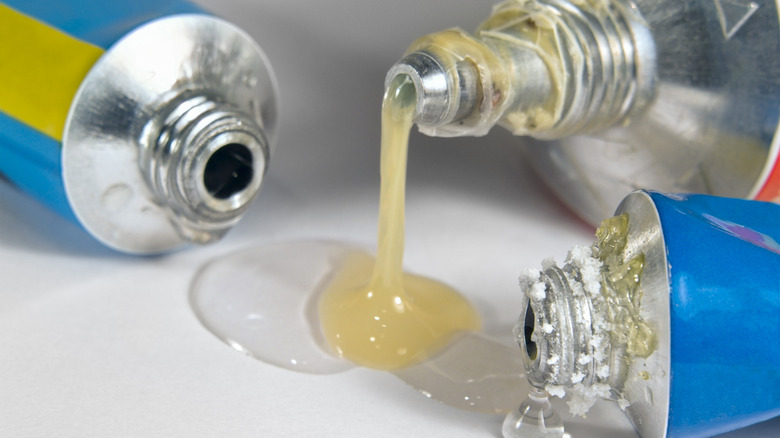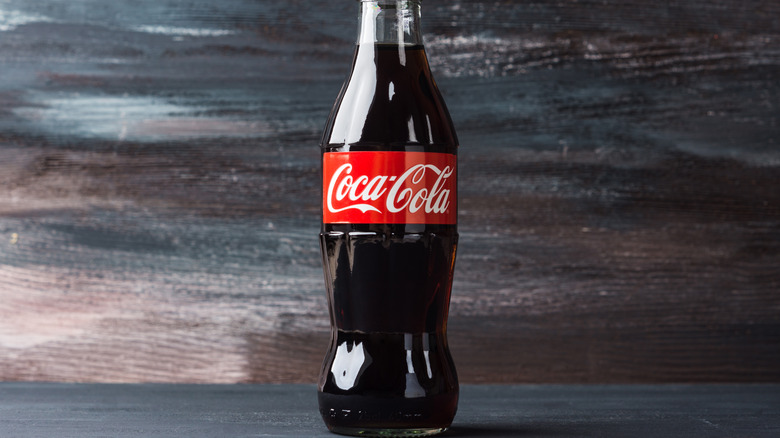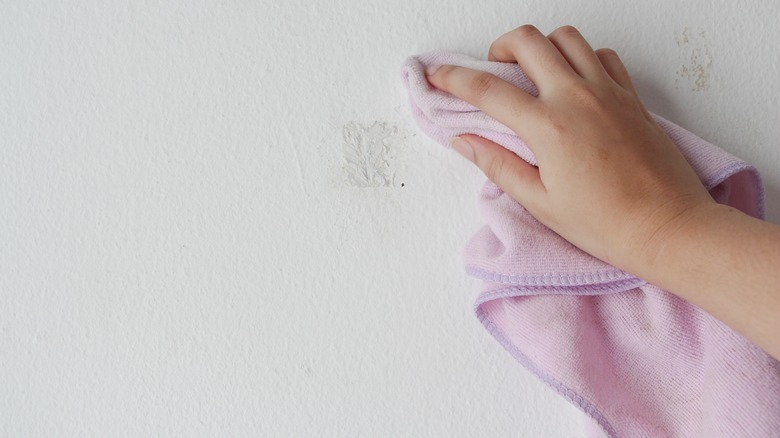Using Coca-Cola To Remove Dried Glue: Good Idea Or Waste Of Time?
The internet is filled with surprising ways to use Coca-Cola around the house. The popular soda is said to be able to do everything from wiping corrosion from car battery terminals and bringing the shine back to jewelry to cleaning toilets and removing grease from pots and pans. Another proposed use is to remove dried glue, but this isn't the best use for the soda. Trying to remove dried glue by using Coca-Cola may come in handy in a pinch but it is not your best bet — there are better solutions for removing dried glue effectively and safely.
Coca-Cola does have some cleaning properties, but it's important to understand its limitations before using it. The cleaning ability comes from the acids in Coke, mainly phosphoric and citric acid. These lower the pH, making it slightly acidic. This acidity can help dissolve things like hard water deposits, soap scum, and some grime. However, the acids in Coke are weak so they won't work quickly. Typically, soaking something in Coke for a long time is necessary for it to have any noticeable effect.
There can be unwanted side effects
While Coca-Cola's mild acidity has some cleaning advantages such as dissolving grease and dirt, its high sugar content presents significant drawbacks.The downsides of the sugar make it a less-than-ideal cleaning choice. Sugar is sticky and can actually attract insects and other pests, creating additional messes especially when it seeps into cracks and crevices. Also, if not completely removed, the sugar residue can harden over time, forming even more stubborn stains than the original mess.
Consequently, it shouldn't be your first go-to when trying to loosen dried glue. While it might seem like a handy solution in a pinch remember that, in the end, Coca-Cola is just a sugary beverage. Removing glue quickly may require more muscle than just a sugary soda. While it can be a handy substitute in an emergency and if you have a lot of time, it's best to stick to non-sugary solutions that won't leave you with sticky surprises down the line.
Better options than Coca-Cola
Turn to quicker glue removal hacks such as acetone (nail polish remover) and hydrogen peroxide which can be used to remove glue from wood and fabric. First, dip a cotton ball or swab in acetone or hydrogen peroxide and dab it onto the superglue residue. Be careful to avoid saturating the surrounding area since acetone also has the power to remove color in large quantities. You can test first in an inconspicuous area. Allow the acetone or hydrogen peroxide to sit for a few minutes to soften the glue. Then gently scrape the softened glue with a blunt tool like a butter knife or rub it softly with sandpaper, and wipe the residue away with a clean cloth. This simple nail polish remover trick can also help remove superglue.
While not as potent as acetone, rubbing alcohol also offers a safe option for glue removal. Dab the glue with rubbing alcohol-soaked cotton, let it sit for several minutes to soften, then gently scrape or wipe it away. Repeat if needed. If the surface is delicate or easily dried out (like wood or leather), opt for a dedicated glue remover instead.


